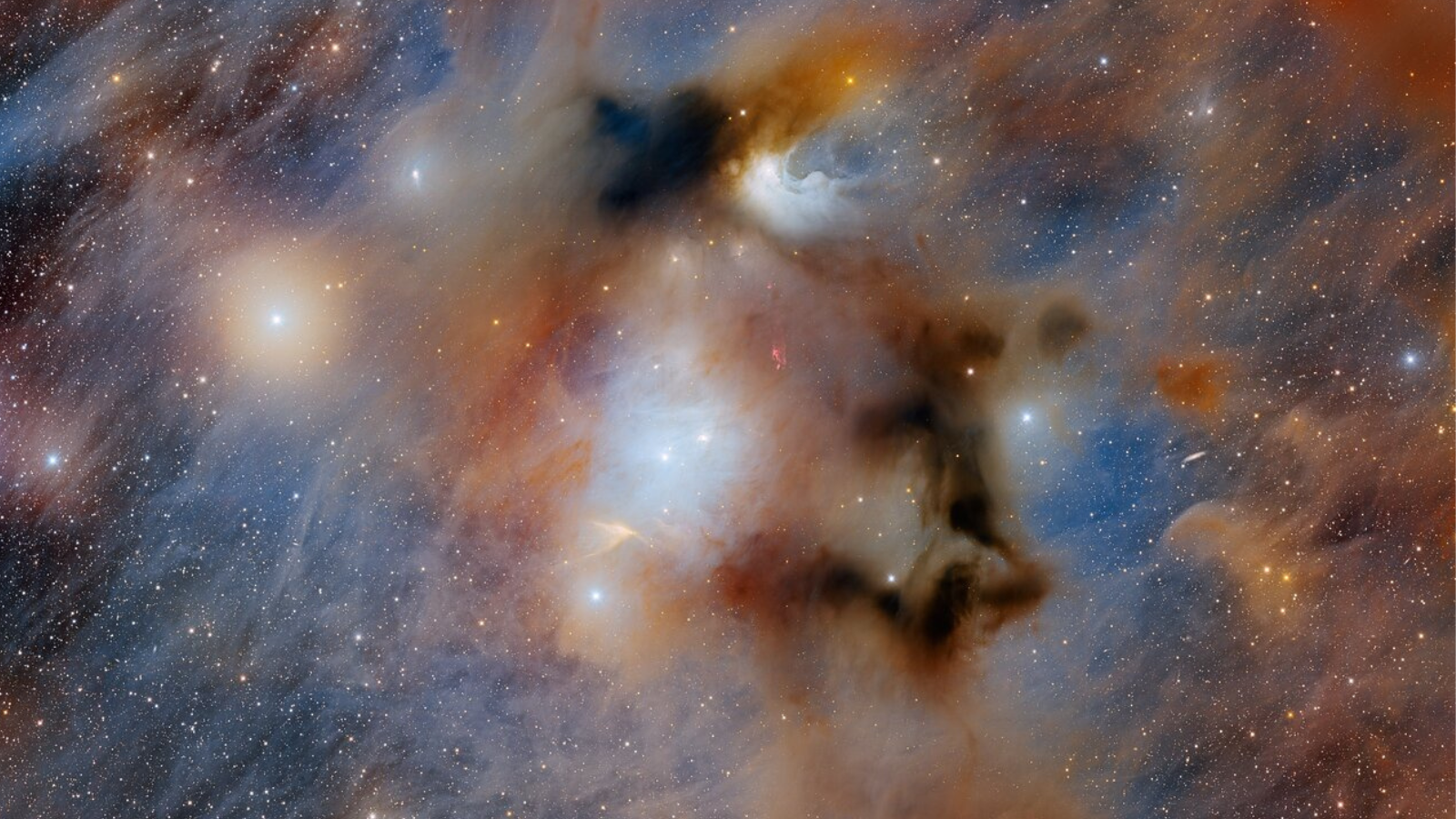The moon has a tail, and Earth wears it like a scarf once a month
The tail is invisible to the naked eye but appears on all-sky cameras during every new moon.

Like a comet soaring through the cosmos, the moon is followed by a slender tail of irradiated matter — and Earth passes directly through it once a month.
According to a study published March 3 in the journal JGR Planets, the lunar tail is made of millions of sodium atoms blasted out of the lunar soil and into space by meteor strikes and then pushed hundreds of thousands of miles downstream by solar radiation. For a few days a month, when the new moon sits between Earth and the sun, our planet's gravity drags that sodium tail into a long beam that wraps around Earth's atmosphere before blasting into space on the opposite side.
The lunar tail is harmless and invisible to the naked eye. During those few new-moon days each month, however, the beam becomes visible to high-powered telescopes that can detect the faint orange glow of sodium in the sky. According to the study's authors, the beam then appears as a fuzzy, glowing spot in the sky opposite the sun, about five times the diameter of the full moon and 50 times dimmer than human eyes can perceive.
Researchers first detected this "sodium spot" in the 1990s. But while the spot always appears at the same time in the lunar cycle, its brightness fluctuates wildly. To understand why, the authors of the new study used an all-sky camera (which can parse the faint wavelengths of light given off by specific elements, like sodium) to take some 21,000 images of the moon, from 2006 to 2019.
They noticed a few predictable patterns — for example, the spot appeared brighter when the moon's orbit brought it closer to Earth — but also an unexpected one. Meteor data showed that the moon's tail glowed more brightly during months when the rate of sporadic meteors (that is, meteors that aren't part of a regular shower) was higher over Earth. When Earth gets pummeled by meteors, so does the moon. And sporadic meteor encounters had an even greater correlation with the moon spot's brightness than recurring showers, such as the Leonid meteor shower, which peaks every November.
The reason for this? It may be that sporadic meteors have the potential to be faster, larger and more energetic than their counterparts in predictable showers, the study authors suggested. Meteors that slam into the moon with more force are more likely to blast large amounts of sodium higher into the atmosphere, the researchers said, creating a larger swarm of atoms for the sun's photons (electromagnetic particles) to collide with and push toward Earth.
If a large enough asteroid crashed into the moon with enough force, it could even produce a sodium spot that anyone on Earth could see with the naked eye, James O'Donoghue, a planetary scientist at the Japan Aerospace Exploration Agency, told The New York Times. (O'Donoghue wasn't involved in the research, but he did make the above lunar-tail animation for the research team.) In the meantime, we'll have to be content with the knowledge that, once a month, our companion in the sky showers Earth with a pinch of cosmic pixie dust.
Get the Space.com Newsletter
Breaking space news, the latest updates on rocket launches, skywatching events and more!
Join our Space Forums to keep talking space on the latest missions, night sky and more! And if you have a news tip, correction or comment, let us know at: community@space.com.

Brandon has been a senior writer at Live Science since 2017, and was formerly a staff writer and editor at Reader's Digest magazine. His writing has appeared in The Washington Post, CBS.com, the Richard Dawkins Foundation website and other outlets. He holds a bachelor's degree in creative writing from the University of Arizona, with minors in journalism and media arts. He enjoys writing most about space, geoscience and the mysteries of the universe.

